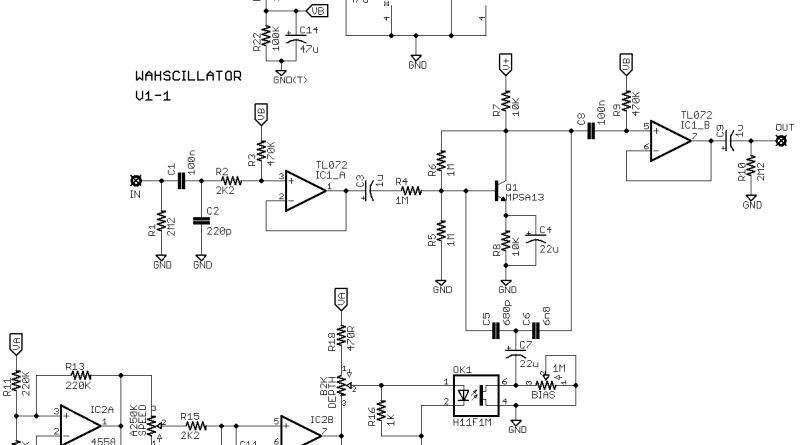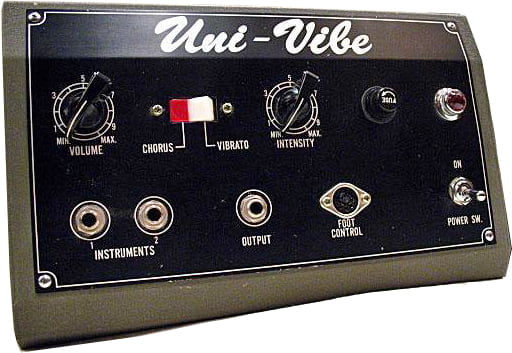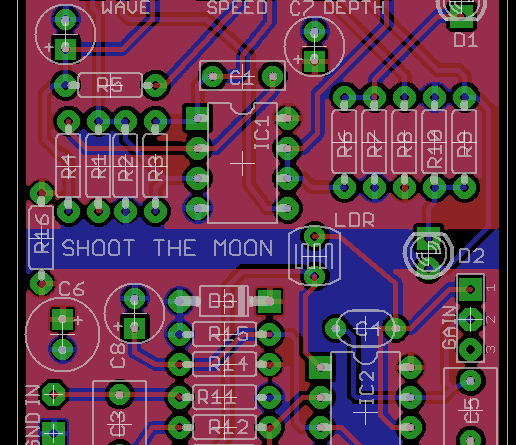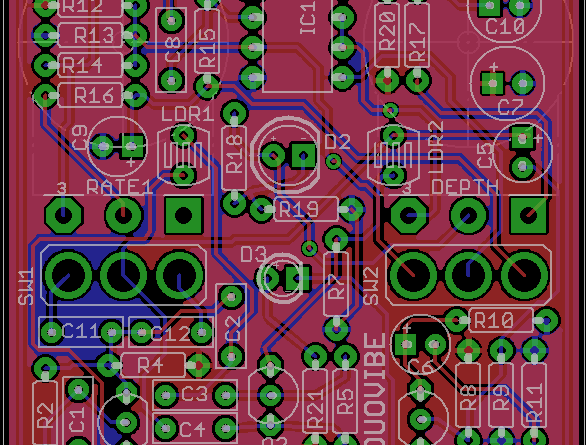The DuoVibe is an optical vibe / phaser and is yet another expansion on Tim Escobedo’s “Wobbletron” circuit snippet first published in 2005 (which is also very similar to the basic phase shift stages in the classic Univibe circuit). I have done several iterations on this cool little building block snippet over the years, and I feel that this one is a nice compromise between simplicity and functionality.
The DuoVibe is a two-stage optical vibe circuit than can also cop subtle phaser tones. The LFO is modified from the Shoot the Moon Tremolo (itself derivative of the Tremulus Lune) and is capable of triangle wave and near-square wave output. The pitch bend in vibe mode is discernible but not capable of “seasick” wobble. With the depth cranked, you can think of it as a sort of “tremolo with pitch funk going on” kind of thing.
There is a Vibe/Phase Mode switch, the name of which indicates its function and purpose. This switch simply toggles a feedback filtering cap value, but is useful despite the simplicity. See the mods section in the downloadable file pack below.
Download the DuoVibe file pack.
Contains: Schematic image, PCB layout image, legacy PCB build guide document with notes, and Eagle CAD files.







